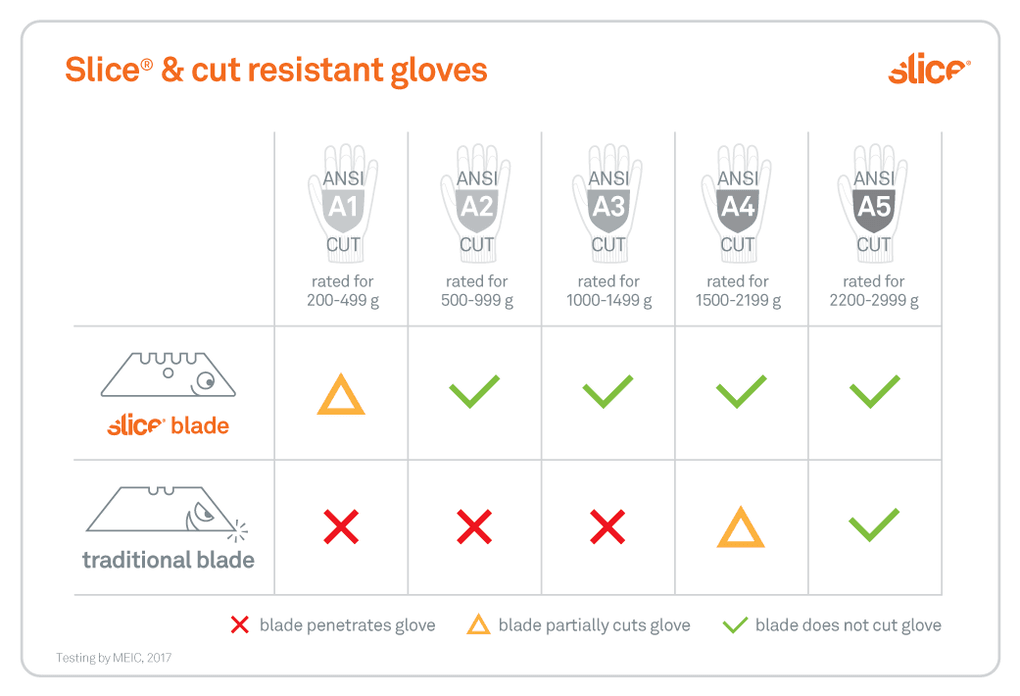Safety Gloves and Cut Resistance: How Do Slice Blades Compare With Steel?

Safety gloves are a must-have piece of PPE (Personal Protective Equipment) in many workplace settings. Aside from protecting against chemicals and abrasions, they’re a final safeguard against accidental cuts. Gloves come in a variety of materials, from light, thin fabric to much heavier, stiffer polymers. The American National Standards Institute (ANSI) has divided safety gloves into nine levels of protection (known as Cut Resistance Levels) as follows:
- Level A1: Requires a minimum of 200 g of weight to cut material.
- Level A2: Requires a minimum of 500 g of weight to cut material.
- Level A3: Requires a minimum of 1000 g of weight to cut material.
- Level A4: Requires a minimum of 1500 g of weight to cut material.
- Level A5: Requires a minimum of 2200 g of weight to cut material.
- Level A6: Requires a minimum of 3000 g of weight to cut material.
- Level A7: Requires a minimum of 4000 g of weight to cut material.
- Level A8: Requires a minimum of 5000 g of weight to cut material.
- Level A9: Requires a minimum of 6000 g of weight to cut material.
These levels protect variously against light nuisance cuts, such as paper cuts, all the way to heavy, dangerous materials like broken glass or knives used for meat processing.
The challenge for an OHS expert is to find a glove that:
a) adequately protects workers
b) allows a maximum degree of maneuverability for better handling
c) is as inexpensive as possible
Many industrial OHS officers ask Slice whether our finger-friendly® grind allows them to purchase a glove with a lower level of cut resistance to reduce costs and increase usability without sacrificing safety. So we had Slice blades tested.
Our Cut Resistance Test Results
In March 2017, we hired MEI-Charlton of Portland, Oregon to compare Slice ceramic safety blades with standard steel blades in terms of cut resistance. MEI-Charlton is an engineering, research and testing organization with state-of-the-art laboratory equipment for product testing. The cut tests were controlled for pressure (constant load) and length of cut (20 mm linear cut).
Slice blades produced a partial cut through Level A1 gloves, which are used to protect against nuisance cuts like paper cuts and handling abrasions. Our finger-friendly grind did not penetrate any gloves at Level A2 or above. In comparison, a standard steel blade cut through glove levels A1 through A3, and partially cut Level A4. Put differently, if you require a Level A5 for your steel blade, our test results indicate that you may be able to switch to a lower level—as low as A2—if you’re using Slice blades.
Slice does not make direct recommendations about glove policies because there are so many factors to consider (application, user variation, maneuverability, and cost, to name a few). However, some companies have chosen to go without gloves. We encourage OHS experts to consider our test results and field test Slice tools to find the best glove policy for their application.
